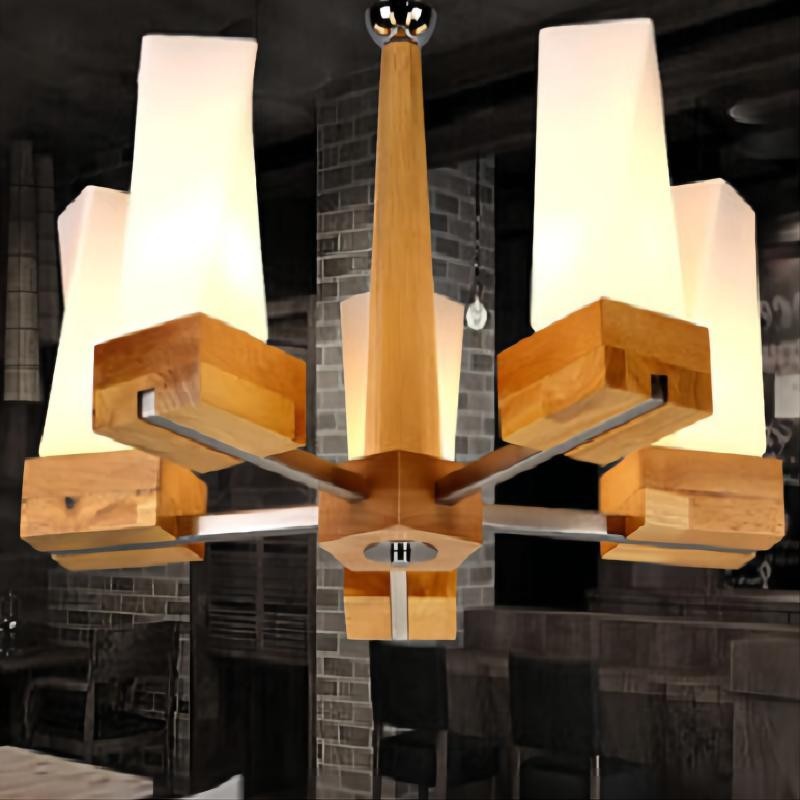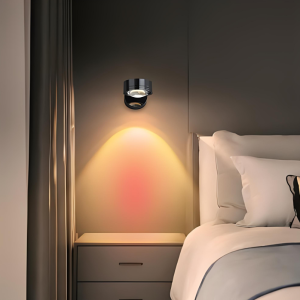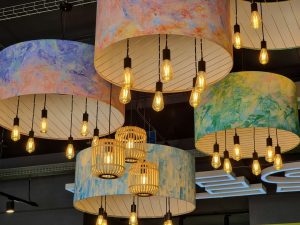
Shedding Light on Interior Decoration: A Guide to Choosing the Perfect Lighting Fixtures
Lighting plays a crucial role in interior decoration. It has the power to transform the mood and atmosphere of a room, making it an essential element to consider when designing your home. In this blog post, we will explore the importance of lighting in interior decoration and provide a comprehensive overview of different types of lighting fixtures. We will also discuss how to choose the right bulb for your lighting fixture, factors to consider when selecting lighting fixtures, and provide tips for using lighting to enhance your home decor. Additionally, we will delve into the concept of layering your lighting, using lighting to highlight your home’s best features, the role of color temperature in lighting design, and the benefits of energy-efficient lighting. Lastly, we will provide maintenance and cleaning tips for your lighting fixtures.
The Importance of Lighting in Interior Decoration
Lighting has a significant impact on the mood and atmosphere of a room. It can make a space feel warm and inviting or cold and sterile. The right lighting can enhance the overall aesthetic of a room and highlight its best features. On the other hand, poor lighting can make a room feel dull and uninviting.
There are three main types of lighting: ambient, task, and accent. Ambient lighting provides overall illumination to a room and is typically achieved through ceiling-mounted fixtures or wall sconces. Task lighting is focused on specific areas where activities such as reading or cooking take place. This type of lighting is usually provided by desk lamps, under-cabinet lights, or pendant lights. Accent lighting is used to highlight specific objects or architectural features in a room. It can be achieved through spotlights, track lights, or wall-mounted fixtures.
Types of Lighting Fixtures: A Comprehensive Overview
There are various types of lighting hozo fixtures available in the market, each with its own unique characteristics and purposes. Chandeliers are elegant and grand fixtures that are often used as a focal point in a room. They come in a variety of styles and sizes, making them suitable for both traditional and modern interiors. Pendant lights are versatile fixtures that can be used to provide task lighting or as decorative elements. They are available in a wide range of designs, from minimalist to ornate.
Recessed lights, also known as can lights or downlights, are installed into the ceiling and provide ambient lighting. They are discreet and blend seamlessly with the ceiling, making them a popular choice for modern interiors. Wall sconces are fixtures that are mounted on the wall and can provide both ambient and accent lighting. They come in various styles and can add a touch of elegance to any room.
Choosing the Right Bulb for Your Lighting Fixture
Choosing the right bulb for your lighting fixture is essential to achieve the desired brightness, color temperature, and energy efficiency. There are three main types of light bulbs: incandescent, LED, and CFL.
Incandescent bulbs are the traditional type of bulb that produce light by heating a filament inside the bulb. They are inexpensive but not very energy-efficient. LED bulbs, on the other hand, use light-emitting diodes to produce light. They are highly energy-efficient and have a long lifespan. CFL bulbs, or compact fluorescent bulbs, use a combination of gas and electricity to produce light. They are more energy-efficient than incandescent bulbs but less efficient than LED bulbs.
When choosing a bulb for your fixture, consider the brightness level you need for the space, the color temperature that suits your preference, and the energy efficiency of the bulb. Brightness is measured in lumens, so check the packaging for the lumen output of the bulb. Color temperature is measured in Kelvin (K) and determines whether the light appears warm or cool. Lower Kelvin values (around 2700K) produce warm light, while higher Kelvin values (around 5000K) produce cool light. Energy efficiency is measured in lumens per watt (lm/W), so look for bulbs with a higher lm/W ratio to save on electricity bills.
Factors to Consider When Selecting Lighting Fixtures
When selecting lighting fixtures, it is important to consider the size and style of your room. The size of the room will determine the number and size of fixtures needed to provide adequate lighting. A large room may require multiple fixtures, while a small room may only need one or two. Additionally, consider the height of the ceiling when choosing fixtures. Low ceilings may require flush mount or semi-flush mount fixtures, while high ceilings can accommodate chandeliers or pendant lights.
The style of your room should also be taken into consideration when selecting lighting fixtures. Choose fixtures that complement the overall aesthetic of your home decor. For example, if you have a modern interior, opt for sleek and minimalist fixtures. If you have a traditional interior, choose fixtures with ornate details and classic designs.
Lighting Design Tips to Enhance Your Home Decor

Using lighting strategically can enhance your home decor and create a visually appealing space. One tip is to use dimmer switches to control the brightness of your lights. This allows you to adjust the lighting according to the mood or activity in the room. Dimming the lights can create a cozy and intimate atmosphere, while brightening them can make a space feel more vibrant and energetic.
Another tip is to layer your lighting by using a combination of ambient, task, and accent lighting. This creates depth and dimension in a room and allows you to highlight different areas or objects. For example, in a living room, you can use recessed lights for ambient lighting, table lamps for task lighting, and wall sconces or picture lights for accent lighting.
Layering Your Lighting: Creating Ambience and Functionality
Layering your lighting involves using different types of lighting to create different moods and functions in a room. It adds depth and dimension to the space, making it more visually interesting. There are three main layers of lighting: ambient, task, and accent.
Ambient lighting provides overall illumination to a room and sets the mood. It can be achieved through ceiling-mounted fixtures, such as chandeliers or recessed lights. Task lighting is focused on specific areas where activities such as reading or cooking take place. It can be provided by desk lamps, under-cabinet lights, or pendant lights. Accent lighting is used to highlight specific objects or architectural features in a room. It can be achieved through spotlights, track lights, or wall-mounted fixtures.
To create a well-layered lighting design, start with the ambient layer and then add the task and accent layers as needed. Consider the function of each area in the room and choose the appropriate type of lighting for that area. For example, in a kitchen, you may need bright task lighting over the countertops and stove, while in a bedroom, you may prefer soft ambient lighting and bedside lamps for reading.
How to Use Lighting to Highlight Your Home’s Best Features
Lighting can be used to draw attention to architectural features, artwork, and other focal points in your home. By strategically placing lights and adjusting their brightness, you can create a focal point and make it stand out.
For architectural features such as columns or arches, use wall-mounted fixtures or recessed lights to graze the surface and create shadows that highlight the texture. For artwork or photographs, use picture lights or track lights to direct the light onto the piece. This will not only illuminate the artwork but also create a dramatic effect.
In addition to highlighting specific features, you can also use lighting to create a sense of depth and dimension in a room. By placing lights at different heights and angles, you can create shadows that add visual interest and make the space feel more dynamic.
The Role of Color Temperature in Lighting Design
Color temperature refers to the color of light produced by a bulb and is measured in Kelvin (K). It plays a crucial role in setting the mood and atmosphere of a room. Warm light, with a lower Kelvin value (around 2700K), creates a cozy and intimate atmosphere. It is often used in living rooms, bedrooms, and dining rooms. Cool light, with a higher Kelvin value (around 5000K), creates a bright and energetic atmosphere. It is often used in kitchens, bathrooms, and offices.
When choosing the color temperature for different rooms, consider the function of the space and the desired mood. For example, in a bedroom, you may prefer warm light to create a relaxing and cozy atmosphere. In a kitchen, you may prefer cool light to provide bright and focused illumination for cooking.
Energy-Efficient Lighting: Saving Money and the Environment
Using energy-efficient lighting not only saves you money on electricity bills but also reduces your carbon footprint. LED bulbs are highly energy-efficient and have a long lifespan, making them an excellent choice for environmentally conscious homeowners.
When choosing energy-efficient lighting, look for bulbs with the ENERGY STAR label. These bulbs meet strict energy efficiency guidelines set by the U.S. Environmental Protection Agency (EPA) and can save you up to 75% on energy costs compared to traditional incandescent bulbs.
To further reduce energy consumption, consider using motion sensors or timers to automatically turn off lights when they are not in use. This ensures that lights are not left on unnecessarily and saves energy.
Maintenance and Cleaning Tips for Your Lighting Fixtures
To keep your lighting fixtures looking their best, regular maintenance and cleaning are essential. Dust and dirt can accumulate on fixtures over time, affecting their appearance and performance.
For glass or crystal fixtures, use a soft cloth or a duster to remove dust. Avoid using abrasive cleaners or harsh chemicals, as they can damage the surface. For metal fixtures, use a soft cloth or a mild soap solution to clean the surface. Be sure to dry the fixture thoroughly to prevent water spots.
When replacing light bulbs, make sure the fixture is turned off and the bulb is cool to the touch. Carefully remove the old bulb and replace it with a new one of the same type and wattage. If you are unsure about how to replace a bulb or make other minor repairs, consult a professional electrician.
In conclusion, lighting is a crucial element in interior decoration that can transform the mood and atmosphere of a room. By understanding the different types of lighting fixtures, choosing the right bulb for your fixture, considering factors such as room size and style, and using lighting strategically, you can enhance your home decor and create a visually appealing space. Additionally, by using energy-efficient lighting and maintaining your fixtures properly, you can save money on electricity bills and reduce your carbon footprint. Use the tips and information provided in this blog post to enhance your home decor with lighting.


